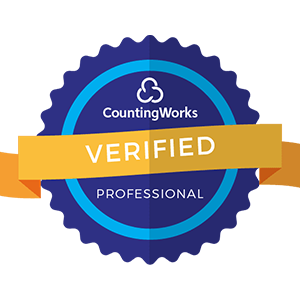
Imagine this: It's Thursday afternoon and you're wrapping up your work for the week. Your calendar is clear tomorrow—no meetings, no calls, no emails to check. You have a blissful 3-day weekend ahead of you to relax, recharge, and do whatever you please. And it will be like this every week.
Sound like a dream? For a growing number of companies, the 4-day work week is becoming a reality. From startups to established corporations, businesses are embracing shorter work weeks and seeing remarkable results. But what does it take to make the switch? Is it really better for employees and companies?
Here's your complete guide to the 4-day work week revolution.
Before diving into implementation details, let's examine why the 4-day work week has become such a hot topic in today's business landscape:
Worker burnout is at an all-time high. The "always on" digital work culture is taking a devastating toll, with 77% of employees saying they've experienced burnout at their current job. Traditional work structures are failing to support employee wellbeing in our hyperconnected world.
The COVID-19 pandemic fundamentally changed how people think about work. Lockdowns gave employees a taste of different work-life balance possibilities and shifted priorities toward health, family, and personal fulfillment over pure career advancement.
Workers are no longer accepting the status quo. Research shows that 95% of knowledge workers want flexible hours and 78% specifically desire a 4-day work week. The Great Resignation proved that employees will leave for better working conditions.
Companies need innovative strategies to attract and retain top talent. In a candidate-driven job market, unique benefits like shorter work weeks can be powerful differentiators that help organizations land the best people.
Countless studies demonstrate that shorter weeks often boost productivity rather than harm it. When implemented thoughtfully, output stays steady or even increases, challenging fundamental assumptions about time and productivity.

The evidence supporting 4-day work weeks extends far beyond employee satisfaction. Here are the most compelling success stories and benefits:
Microsoft Japan implemented a 4-day work week and saw a 40% jump in productivity, along with significantly reduced electricity costs and higher employee satisfaction scores.
New Zealand's Perpetual Guardian made their 4-day week permanent after a successful trial that boosted output, employee satisfaction, and work-life balance while reducing stress levels across the organization.
Swedish healthcare systems moved nurses to 6-hour workdays and observed lower burnout rates, higher quality patient care, and 50% fewer sick days among staff.
Enhanced Gender Equality: Shorter work weeks make it easier for working parents to balance responsibilities and support more equitable division of household labor.
Environmental Impact Reduction: Cutting commutes and powering down offices one day per week significantly reduces companies' carbon footprints and supports sustainability goals.
Talent Attraction and Retention: 63% of businesses found it easier to attract and keep talent after implementing 4-day work weeks, giving them competitive advantages in tight labor markets.
Reduced Operating Costs: Lower office overhead, utilities, and facilities costs can offset any productivity concerns while improving the bottom line.
Ready to transition to a 4-day work week? Follow this proven framework for successful implementation:
Making a major shift in your working model must start at the top. Create a compelling executive presentation that includes:
Essential Pitch Elements
There's no universal 4-day work week model. Consider these options based on your business needs:
Standard 4-Day Week
Everyone takes the same day off (typically Friday or Monday) for maximum team alignment and company culture benefits.
Staggered Coverage Model
Different employees take different days off to ensure 5-day customer service and operational coverage.
Compressed Hours Approach
Maintain 5 working days but reduce daily hours (e.g., 6-hour days) for better work-life integration.
Seasonal Implementation
Offer 4-day weeks during slower business periods or specific seasons when reduced coverage is manageable.
Team-Based Flexibility
Allow individual teams to determine their optimal 4-day approach based on their specific responsibilities and customer needs.
Reducing working time requires maximizing efficiency during available hours. Focus on these key areas:
Meeting and Communication Optimization
Process Improvement Initiatives
Like any major organizational change, start with a controlled pilot program:
Trial Design Best Practices
Choose optimal timing: Select a slower business period to minimize risk and maximize learning opportunities.
Set clear duration: Commit to a 6-12 week trial period that's long enough to generate meaningful data.
Define success metrics: Establish baseline measurements for productivity, employee satisfaction, customer service, and business results.
Monitoring and Assessment
During your trial period, carefully track:
After the trial, conduct a comprehensive review with leadership to assess results and determine next steps. Success should lead to permanent implementation, while mixed results might require approach adjustments and additional testing.
Transitioning to a 4-day work week presents predictable obstacles. Here's how to address the most frequent concerns:
Challenge: Reduced availability may impact customer satisfaction and business relationships.
Solutions:
Challenge: Leadership worries about decreased productivity and missed deadlines.
Solutions:
Challenge: Certain roles or departments require consistent daily coverage.
Solutions:
Challenge: Scheduling meetings and coordinating projects becomes more complex.
Solutions:
Challenge: Employees struggle with longer daily hours in compressed schedules.
Solutions:
The 4-day work week represents just one aspect of a broader shift toward flexible, employee-centric work arrangements. Forward-thinking organizations are experimenting with various approaches to work flexibility:
Fully Remote Work: Complete location independence for roles that don't require physical presence.
Hybrid Arrangements: Combination of in-office and remote work tailored to individual and team needs.
Job Sharing: Multiple employees sharing responsibilities for a single full-time position.
Flexible Hours: Self-managed schedules within core business hour requirements.
Self-Managed PTO: Unlimited or self-directed vacation and personal time policies.
Not ready for a full 4-day work week transition? Consider these smaller steps:
Low-Risk Pilot Programs
Building a Culture of Experimentation
The key is adopting an experimental mindset. Survey your team about what flexibility would most improve their lives, then start with pilot programs. Treat every new policy as a learning opportunity—track results, gather feedback, iterate, and expand successful initiatives.

Based on successful 4-day work week implementations across industries, these factors consistently contribute to positive outcomes:
The 4-day work week isn't just a trend—it's part of a fundamental shift toward more human-centered work arrangements. As technology continues to enable new ways of working and employees increasingly prioritize wellbeing alongside career success, organizations that embrace flexibility will gain significant competitive advantages.
The evidence is clear: when implemented thoughtfully, 4-day work weeks can boost productivity, improve employee satisfaction, reduce operational costs, and enhance talent attraction and retention. The question isn't whether this approach works—it's whether your organization is ready to challenge traditional assumptions about time and productivity.
The bottom line: In an era of burned-out workers and fierce competition for talent, the most successful companies will be those that reject rigid status quo approaches and build work cultures that truly put their people first. And that might just mean working less to achieve more.
Your next step: Start the conversation in your organization. Survey employees about their flexibility priorities, research successful implementations in your industry, and begin building the business case for change. The future of work is flexible—and it starts with leaders brave enough to try something different.


